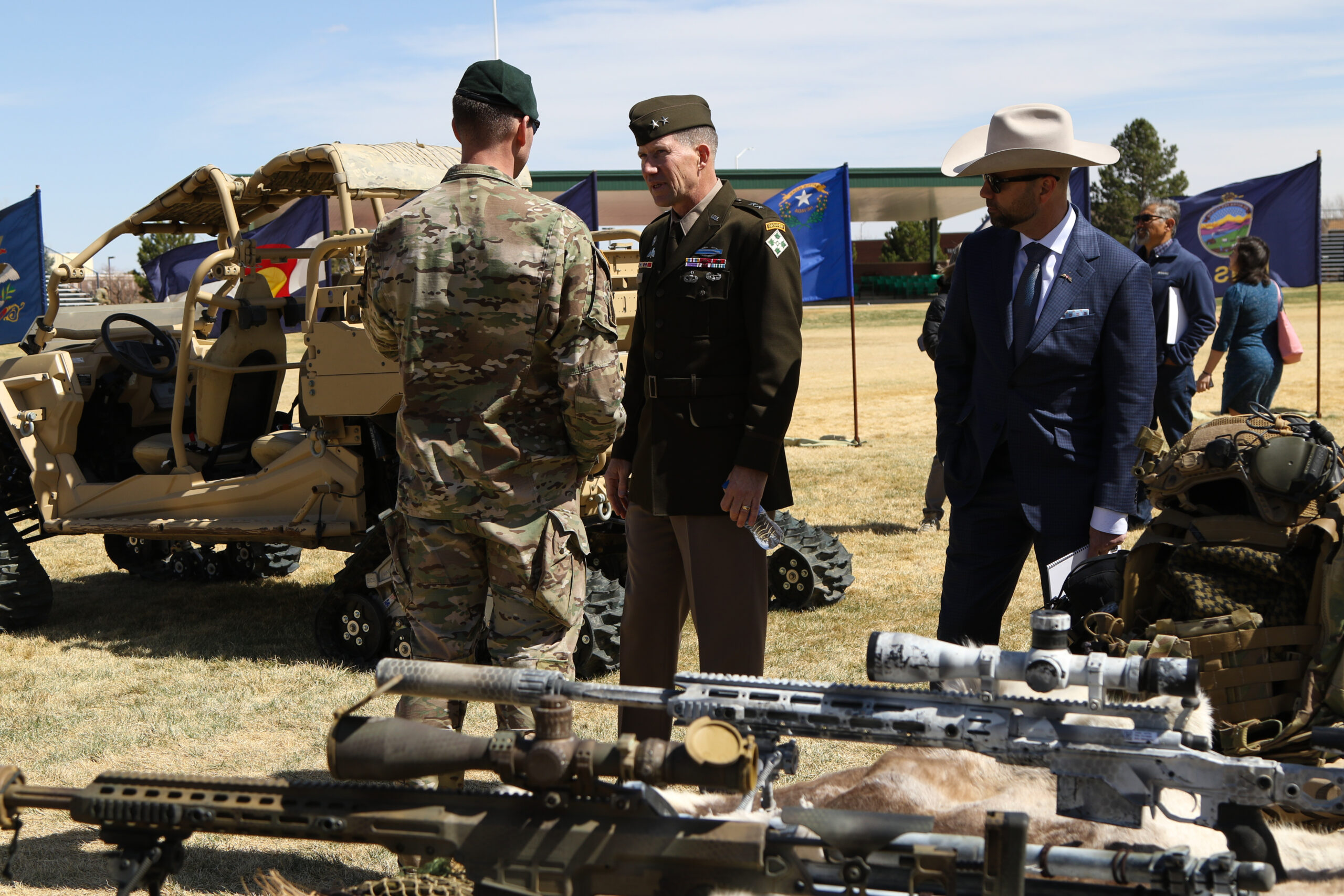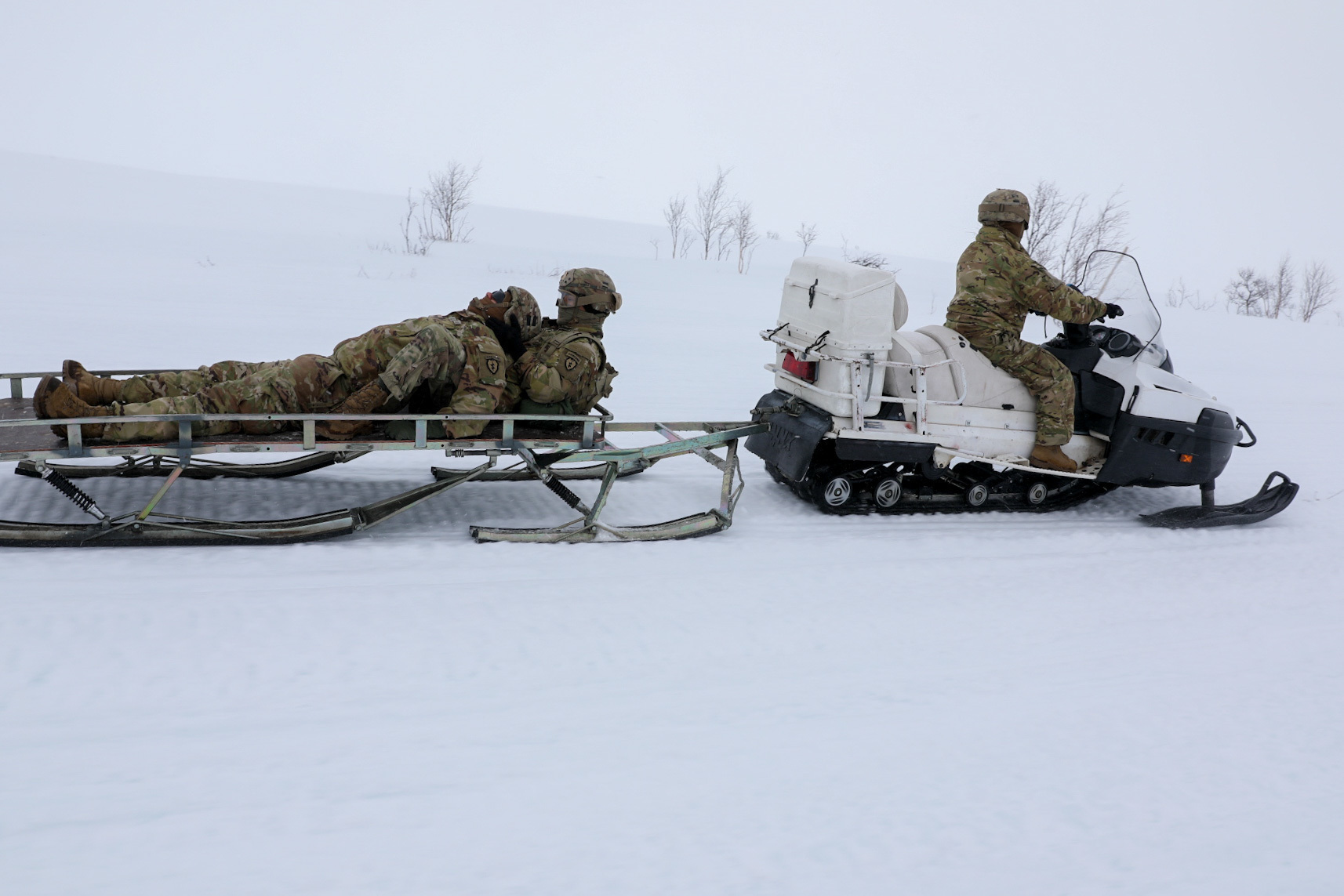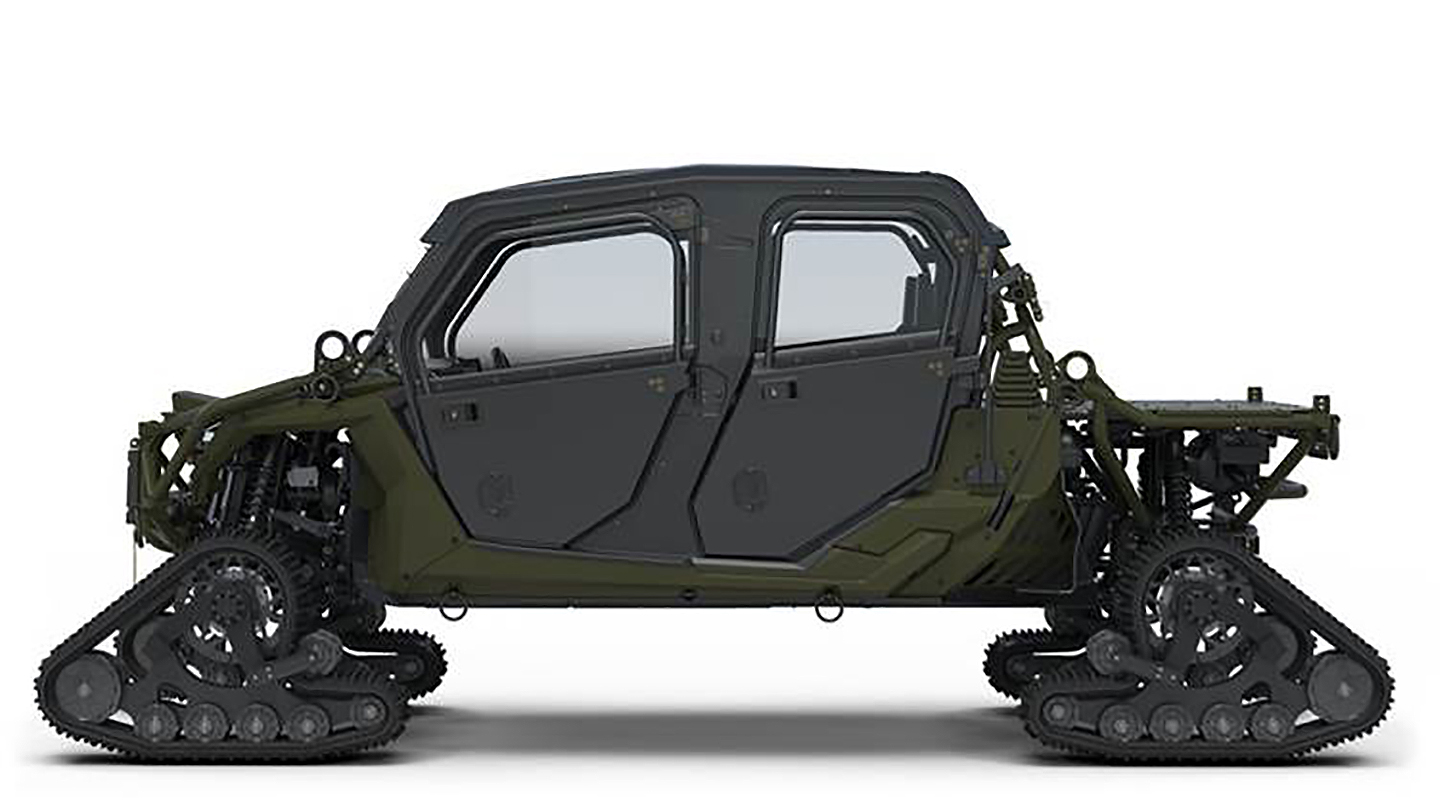Special Operations Forces could soon enjoy a heated-cabin, tracked version of the Polaris MRZR Alpha all-terrain buggy. This would make them more comfortable on long-range missions in cold Arctic climates where the U.S. military is facing off with peer competitors’ territorial ambitions.
U.S. troops could get their hands on the retrofit kits as early as next year, under an option of the current seven-year contract with Polaris to provide Special Operations Command with its lightweight all-terrain vehicle (LATV), SOCOM’s designation for the MRZR Alpha. Defense News‘ Jen Judson reported that the Arctic mobility kits are currently in government validation testing and that a SOCOM decision on whether to buy them (and if so, how many) is expected in early 2023.
Polaris unveiled the Arctic Mobility Kit at the Modern Day Marine Expo in Washington, D.C., last week, though the display model was shown with the tracks but not with the enclosed cab. Polaris plans to display the full setup at both the Special Operations Industry Conference (SOFIC) in Tampa, Florida, this week and at the Association of the U.S. Army annual conference in October.
U.S. Special Operations Command troops have used traditional ride-on-top snowmobiles for Arctic missions, where the new MRZR Alpha protects occupants from the cold, as well as wind, snow, rain, and other environmental conditions. It could be an ideal vehicle configuration for special operators performing missions in the strategically-vital Arctic region.
The tracks and cab are a retrofit kit for the MRZR Alpha vehicle that can be used together or separately for different missions. Polaris enclosed the cabin with rigid polycarbonate panels on the sides, the roof, and windshield. It is vented and heated and includes a defrost system and windshield wipers.
Initially designed for enhanced Arctic and tundra mobility, the interchangeable elements of the cab enclosure and track kit can be mixed and matched for mission flexibility, Polaris says. The track conversion kit replaces each wheel with a separate track assembly, maintaining the same level of maneuverability while adding another level of off-road, all-terrain capability over snow, soft soil, and mixed terrain.
“While oversnow options like Polaris snowmobiles are incredibly effective, there are situations that require added passenger capacity and payload,” Nick Francis, Vice President of Polaris Government and Defense, said in a prepared statement. “The full cab and tracks expand the environments the MRZR Alpha can operate in and increase an already wide range of terrain for which it is well-suited.”
MRZR comes in both two-door and four-door versions. Polaris is demonstrating the Arctic track-and-cab kits on a four-door version but it can be installed on either variant. Polaris also displayed a new command-and-control variant of MRZR at Modern Day Marine.
With a range of 225 miles and a 2,000-pound payload capacity, the MRZR LATV is used by SOCOM and Army airborne forces, as well as other services. It features a twin-cylinder 88-horsepower engine and can reach speeds of 60 miles per hour. It is not clear how fast the tracked vehicle will be, but speed will depend much on the snow or ice conditions. The LATV has a reconfigurable rear bay that can carry cargo, a casualty litter or two additional rear-facing seats. It is designed to be transportable in a CH-47 Chinook helicopter or CV-22 Osprey. The MRZR has been adapted to everything from anti-drone vehicles to experimental cyber-attack platforms.
Polaris holds a $109 million contract to supply SOCOM with LATVs. At least one tracked version of the basic vehicle already is in use by Army Special Forces troops, as seen in the below photo from Fort Carson, Colorado, in March.

Adding tracks to the vehicle and enclosing the cab will benefit SOF troops operating in extreme environments where they currently use traditional snowmobiles like modified Polaris Titan and Pro-RMK vehicles.
Snowmobiles greatly extend the range of small-unit operations in austere environments, primarily when delivered by rotorcraft, as the MRZR can be. The combination of tracked vehicles capable of driving quickly over snow and ice and vertical lift platforms means SOF units can penetrate deep into enemy territory swiftly and just as quickly be extracted by air. The 10th Special Forces Group in 2019 posted a video on Facebook of its troops learning advanced snowmobile riding techniques, cold-weather survival, and tactics.
Conventional U.S. Army forces and the Marine Corps could also be interested in a tracked version of the MRZR. The Army is looking to buy a new Cold Weather All-Terrain Vehicle, or CATV, specifically for operations in and around the Arctic region to replace the service’s aging Cold War-era Small Unit Support Vehicles. Two industry teams are currently duking it out to build the new SUSV.
U.S. paratroopers routinely exercise with Scandinavian allies in the Arctic, where snowmobiles are used for various purposes, including casualty evacuation and hauling personnel and equipment through snowy environments.

Russia, which has the largest land area above the Arctic circle, has increased its military presence in the region in recent years and has equipped its special operations troops with snowmobile vehicles similar to what Polaris has developed. Russia operates the Berkut-2, which is basically a compact car on a snowmobile chassis. That vehicle, which also has a heated, enclosed cabin, debuted during Russia’s 2018 Victory Day parade in Moscow. Elite Russian units have also been seen tooling around in an arctic version of the M-3 Chaborz, a 4×2 dune buggy with skis in the front and rear tracks that drive the vehicle.

The Army recognizes the strategic importance of maintaining a presence in the far north to counter Russian power projection in the region, as well as Chinese designs on establishing a foothold in the highest latitudes. As the climate warms and Arctic sea ice recedes, the region presents new economic and strategic opportunities including newly opened sea lanes and access to fossil fuels beneath the seabed.
Published in 2021, the Army’s Arctic Strategy states explicitly that the region is “essential to Russia’s military power” and that “Russian military developments in the region are by far the most advanced driver of great power competition.”
SOCOM has not purchased any of the snowmobile kits for the LATV, but such specialized capabilities for operating in high-latitude snowy environments will likely be high on the military’s wishlist as it ramps up activity above the Arctic Circle.
Contact the author: Dan@thewarzone.com
